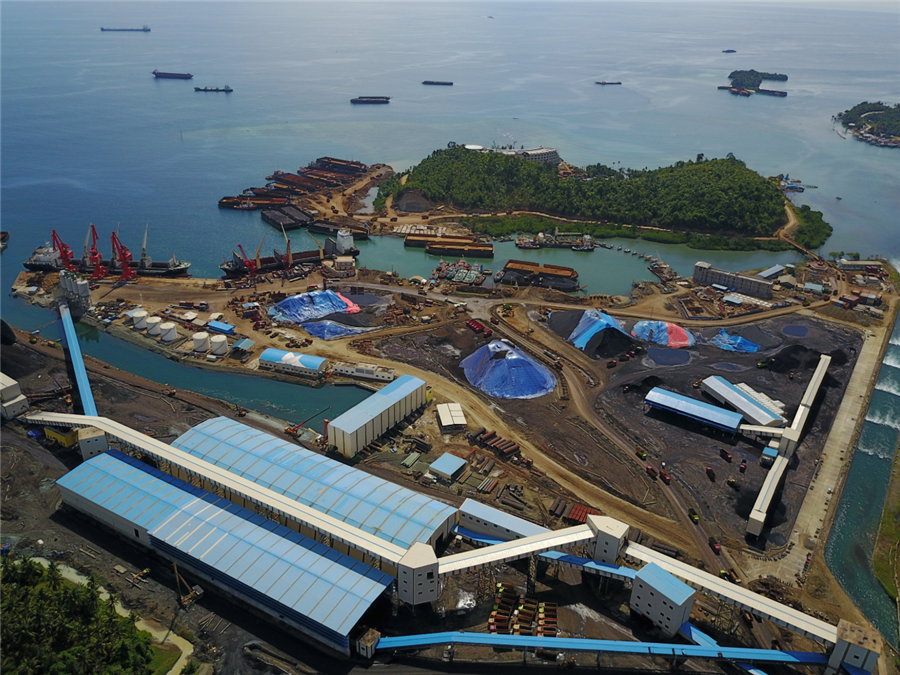Nickel’s perfect bull storm as Indonesia bans exports again

Whatever happened to that old market adage of buying the rumour and selling the fact?
Nickel investors bought heavily into rumours that the Indonesian government was thinking about bringing forward a ban on nickel ore exports.
Now the ban has been confirmed for the start of next year rather than the original 2022 deadline, they have bought some more.
An Indonesian export ban could impact up to 10% of global supply, according to Goldman Sachs
London Metal Exchange (LME) three-month nickel hit a five-year high of $18,850 per tonne on Monday with the Shanghai Futures Exchange scaling life-of-contract highs amid surging open interest.
Goldman Sachs added fuel to the bull fires with a forecast that the nickel price could spike to $20,000 over three months.
An Indonesian export ban could impact up to 10% of global supply, according to the bank.
That analysis comes with multiple moving parts, not least Indonesia’s own recent history of policy U-turns on the question of its nickel exports.
While some sort of supply disruption is guaranteed, there is a lot of speculative heat in the sizzling nickel market right now, meaning more price volatility is also guaranteed.
Indonesia bans ore exports, again
The nickel market has been here before.
Indonesia banned all exports of nickel ore at the start of 2014 before allowing a partial resumption by operators who could prove they were working on building processing capacity.
The compromise was due to run until 2022 but the country’s government has accelerated the timetable with a full ban now due at the start of 2020.
Given the policy chop-and-change since 2014, it’s by no means certain that things won’t change again, particularly if the loss of export earnings starts impacting some of the processing projects already underway.
But assuming the ban holds, there will be an undoubted short-term hit on supply, given Indonesia accounts for around a quarter of global mine supply.
The question is to what extent and how quickly supply chains can adapt to compensate for the loss of Indonesian ore exports.
Alternative supplies
The big winner from the original Indonesian ban was the Philippines, which boosted its exports of nickel ore to China.
It remains a key alternative supplier to China’s nickel pig iron (NPI) sector and in volume terms shipments now run at almost double the rate of Indonesian flows.
There is some potential for the Philippines to lift output again, although the country’s nickel miners have been constrained by tightening environmental rules on their operations.
The problem, though, is that ore from the Philippines tends to be lower grade than that from Indonesia, which affects NPI producers’ ability to achieve the purity mix needed for stainless steel production.
More significant as an alternative supplier is Indonesia itself.
The logic underpinning Indonesia’s ore policy is the development of a domestic processing industry.
It has already been successful, most notably with China Tsingshan Group’s ramp up of both NPI and stainless steel capacity in the country.
Others have moved only as far as first-stage processing, turning ore into NPI for onward shipment to China.
Indonesia currently has 11 operating processing plants with 25 more in the pipeline
Such exports have grown to become a significant source of supply for China’s stainless steel producers, albeit one that is sometimes difficult to quantify given China’s customs department classifies Indonesian NPI as “ferro-nickel”.
The give-away clue is the lower value of Indonesian “ferro-nickel” imports relative to other suppliers. The average implied value of imported Indonesian material was $1,740 per tonne in July compared with in excess of $4,000 for producers such as Brazil or Colombia.
Total “ferro-nickel” imports from Indonesia were just 7,200 tonnes in 2014, the year when the ore ban was first introduced.
They have been running at an annualised 1.2 million tonnes over the last three months.
Evidently, there is plenty of potential for these exports to rise if Indonesian miners accelerate the building of processing capacity as is clearly the aim of the new, fast-track ban.
Indonesia currently has 11 operating processing plants with 25 more in the pipeline, according to the Ministry of Energy and Mineral Resources.
Indeed, energy and minerals consultants Wood Mackenzie forecast that by 2021, Indonesian NPI output will surpass China’s, which is estimated at 570,000 tonnes this year.
Overheating?
Even allowing for more Philippines exports and greater volumes of Indonesian NPI, the supply chain is going to be sorely tested once the ban kicks in next year.
Analysts are revisiting their forecasts with most now penciling in a global supply deficit both next year and in 2021.
This is the core story underpinning nickel’s stellar rally but it’s worth remembering that nickel has been trading the Indonesian rumours for several months now.
News of the ban, if it can be called news at all, should in theory be almost totally priced in at current levels.
But markets are rarely so rational when gripped by the sort of speculative fever currently animating nickel.
Shanghai nickel has seen an unprecedented build in open interest on the latest leg of the rally, suggesting a mass stampede by speculators into an already hot market.
LME broker Marex Spectron estimates the speculative long in London at around 22% of open interest, not yet at levels seen in June 2018, when it reached 34% of open interest, but still substantial.
Extra spice to an already heady bull cocktail comes in the form of a tightening in the LME spread structure.
The benchmark cash-to-three-months time spread <CMNI0-3> was trading in comfortable $90-per tonne contango as recently as the start of July. As of Friday’s close it was valued at a backwardation of $104 per tonne.
The spread has eased somewhat over the last 24 hours but cash metal is still at a significant level to forward prices, acting as a deterrent to would-be short sellers.
Nickel, in other words, finds itself in a perfect bull storm, which is why it has deviated so sharply from the rest of the LME base metals suite.
But can it simply keep on rallying now that there is no more Indonesian “news” to trade?
Even Goldman’s analysts caution they are expecting the price to retrace to $16,000 over a 12-month time-frame as supply adapts to the Indonesian ban.
Whatever happens, it’s not going to be a smooth ride. It never is when it comes to nickel.
(By Andy Home; Editing by Emelia Sithole-Matarise)
{{ commodity.name }}
{{ post.title }}
{{ post.date }}

Comments